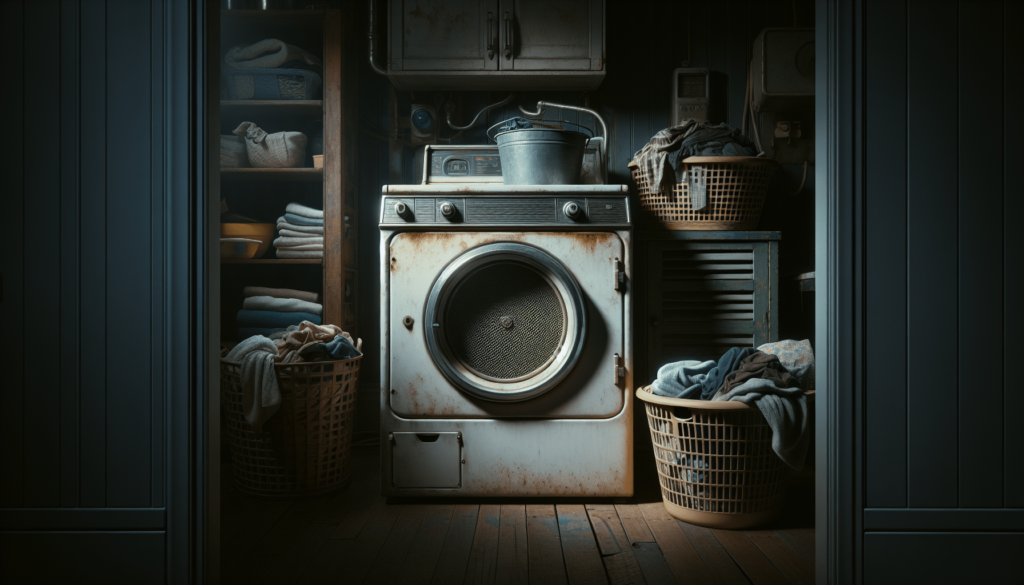Have you ever wondered how you know when your dryer is going out? It’s a question many homeowners face at some point. As one of the most frequently used appliances in your household, recognizing the signs of a failing dryer can save you time, money, and quite a bit of frustration. Here’s a friendly guide to help you understand the potential warning signs and what steps you can take to address them.
Common Signs Your Dryer Might Be Going Out
Clothes Taking Too Long To Dry
One of the first indicators that your dryer might be on its last legs is when your clothes take significantly longer to dry than usual. This could be due to various issues, such as a clogged vent, heating element problems, or a malfunctioning thermostat.
Possible Causes
| Cause | Description |
|---|---|
| Clogged Vent | Lint and debris buildup in the vent can restrict airflow, causing the dryer to overheat. |
| Heating Element Problems | The heating element could be damaged or burned out, reducing the dryer’s efficiency. |
| Malfunctioning Thermostat | A faulty thermostat may not regulate the temperature correctly, affecting the drying process. |
Unusual Noises
If you start hearing strange noises like grinding, squeaking, or banging, it might be a sign that internal parts of your dryer are wearing out. This could be due to worn-out drum bearings, a faulty belt, or loose parts.
Possible Causes
| Cause | Description |
|---|---|
| Worn-Out Drum Bearings | Bearings support the drum and allow it to rotate smoothly. Worn-out bearings can cause grinding noises. |
| Faulty Belt | The belt turns the drum; if it’s damaged, it might create a squeaking noise. |
| Loose Parts | Screws or other small parts may come loose over time, leading to banging sounds. |
Overheating
If your dryer is getting unusually hot, it’s a clear sign that something is not right. Overheating can be dangerous as it poses a fire risk.
Possible Causes
| Cause | Description |
|---|---|
| Blocked Vent | Similar to the drying issue, a blocked vent can cause the machine to overheat. |
| Failing Thermostat | A malfunctioning thermostat might not shut off the heating element when it reaches the correct temperature. |
| Electrical Issues | Faulty wiring can cause the dryer to overheat. |
Dryer Shuts Off Mid-Cycle
Another sign that something might be wrong with your dryer is if it randomly shuts off mid-cycle. This can be due to a variety of electrical or mechanical problems.
Possible Causes
| Cause | Description |
|---|---|
| Overloaded Dryer | Putting too many clothes in the dryer can cause it to overheat and shut down for safety reasons. |
| Motor Issues | The motor might be failing, causing it to stop working intermittently. |
| Thermostat Problems | Again, a faulty thermostat can cause the dryer to shut off unexpectedly. |
Diagnostic Steps
Check the Vent System
Before assuming the worst, the first thing you should check is the vent system. A clogged vent is a common cause of many dryer issues and is relatively easy to fix.
Cleaning Steps
- Unplug the dryer and pull it away from the wall.
- Disconnect the vent hose from the dryer.
- Use a vacuum cleaner or a vent cleaning brush to remove the lint and debris.
- Reconnect the vent hose and push the dryer back into place.
- Plug the dryer back in and see if it performs any better.
Test the Thermostat
If cleaning the vent didn’t resolve the issue, the next step is to check the thermostat. You can use a multimeter to test it.
Testing Steps
- Unplug the dryer.
- Locate the thermostat, usually found behind the back panel.
- Disconnect the wires attached to the thermostat.
- Set your multimeter to the lowest ohms setting.
- Place the multimeter probes on each thermostat terminal.
- A reading of zero or near zero indicates the thermostat works. If not, it may need replacing.
Inspect the Heating Element
If your dryer is not heating up properly, the heating element might be the culprit. You can visually inspect it or use a multimeter for a more accurate diagnosis.
Inspection Steps
- Unplug the dryer.
- Locate the heating element (usually behind the back panel).
- Check for signs of damage or breaks in the coil.
- Optionally, use a multimeter to measure continuity. Place the probes on each end of the element; a reading shows it’s functioning, while no reading indicates a problem.
Examine the Drum Support Rollers and Motor
Persistent strange noises may require you to take a closer look at the drum support rollers and motor.
Examination Steps
- Unplug the dryer.
- Remove the dryer drum to access the rollers and motor.
- Look for any signs of wear, damage, or looseness.
- Replace any faulty parts to ensure smooth operation.

When To Call A Professional
While some dryer issues can be resolved with a bit of DIY effort, others may require professional help. Here are some scenarios where it’s best to call in an expert.
Electrical Problems
If you suspect any electrical issues, such as faulty wiring or repeated tripping of the circuit breaker, it’s crucial to call a professional. Electrical issues can be dangerous and should not be handled without proper knowledge and tools.
Persistent Problems
If you’ve tried all the basic troubleshooting steps and the problem persists, it’s time to consult a professional. They have the expertise to diagnose and fix more complex issues that may not be apparent to you.
Warranty Considerations
If your dryer is relatively new and still under warranty, any repair attempts you make might void the warranty. Always check the warranty terms and consider calling a professional to handle repairs.
Preventative Measures
Preventing dryer issues before they start can save you a lot of trouble. Here are some maintenance tips to keep your dryer running smoothly for years to come.
Regular Cleaning
Regularly cleaning the lint trap and vent system can prevent many common dryer problems.
Cleaning Routine
- Lint Trap: Clean the lint trap after every load.
- Vent System: Clean the vent system at least once a year or more often if you notice reduced performance.
Avoid Overloading
Overloading your dryer puts extra strain on the motor and other components, reducing its lifespan. Always follow the manufacturer’s recommended load limits.
Inspecting for Wear and Tear
Regularly inspect your dryer for signs of wear and tear. Look for any frayed wires, loose parts, or unusual noises, and address them promptly.
Professional Inspections
Consider scheduling professional inspections every couple of years. A technician can identify and fix minor issues before they become major problems.

Conclusion
Knowing when your dryer is going out isn’t always straightforward, but by paying attention to the signs and performing regular maintenance, you can extend its life and avoid costly repairs. If you do encounter issues, don’t hesitate to conduct some basic diagnostics. And when in doubt, calling in a professional is always a sound decision.
Understanding your dryer’s condition and taking preventative measures is the key to maintaining a functional and efficient laundry routine. Remember, keeping an eye on your dryer’s performance isn’t just about convenience—it’s also about safety. So, stay vigilant and you’ll have one less thing to worry about in your busy life!
